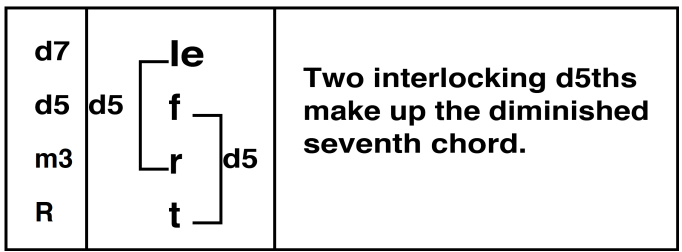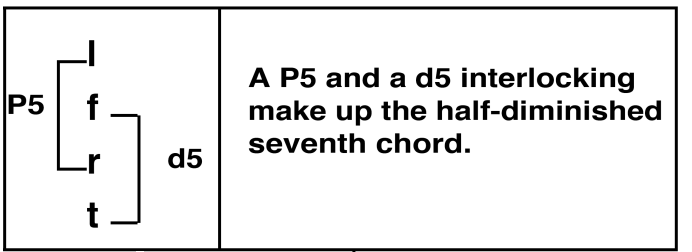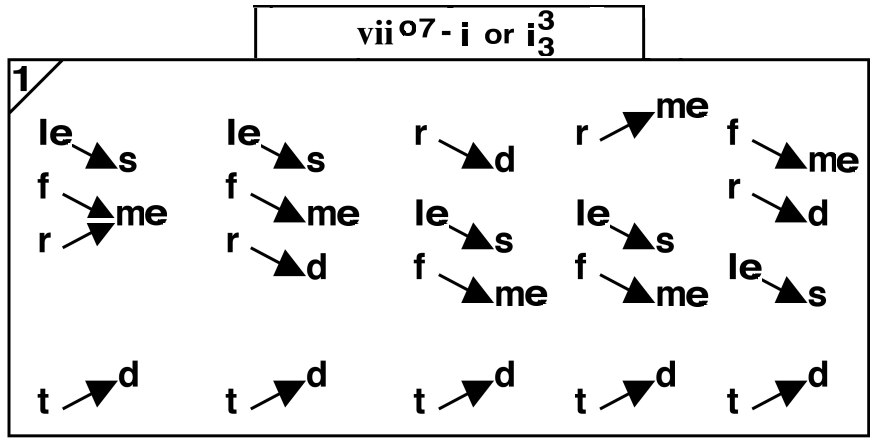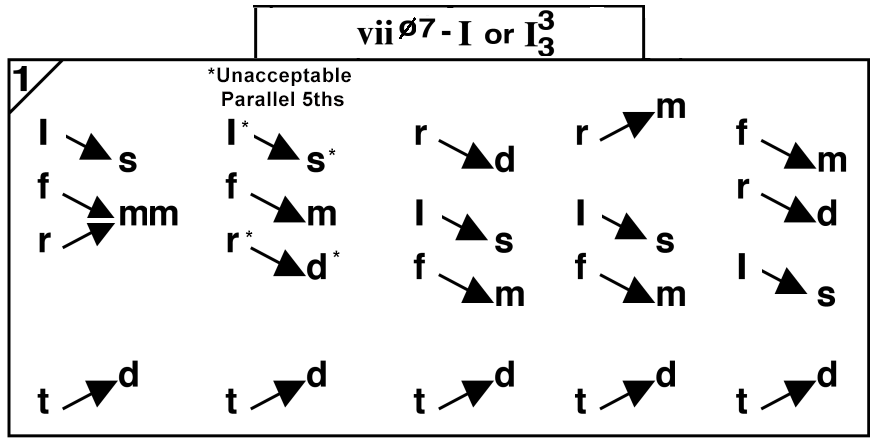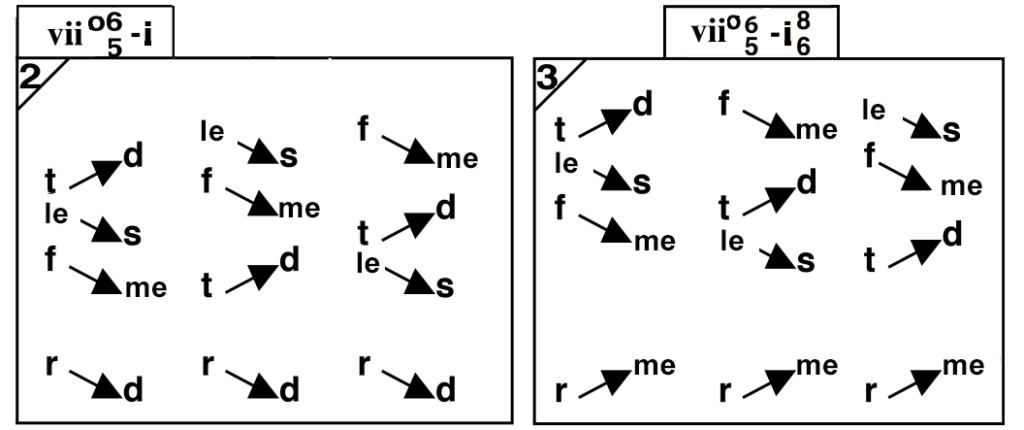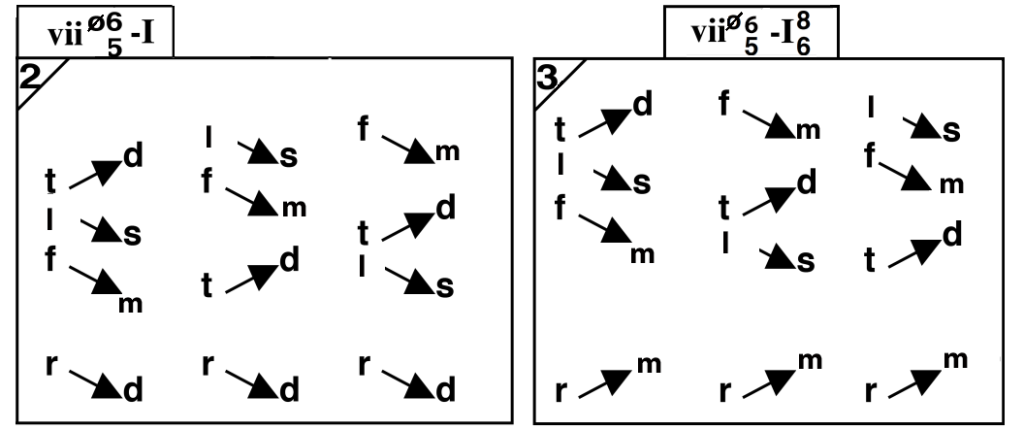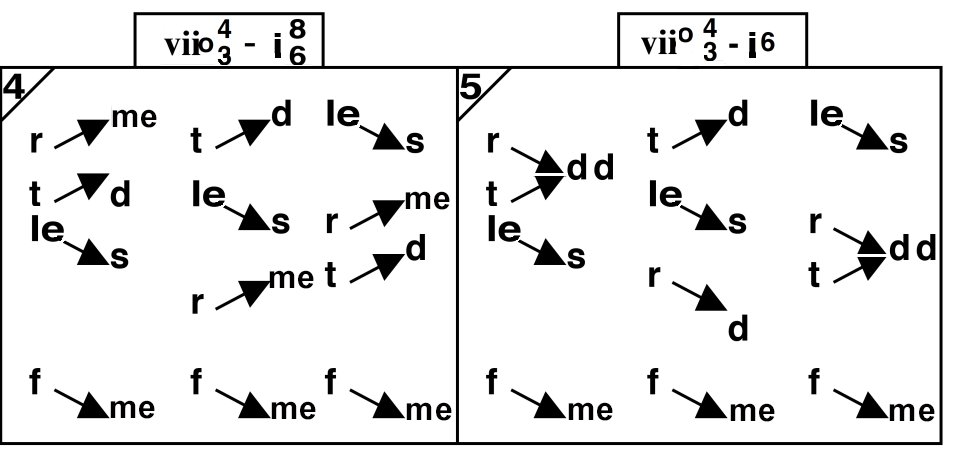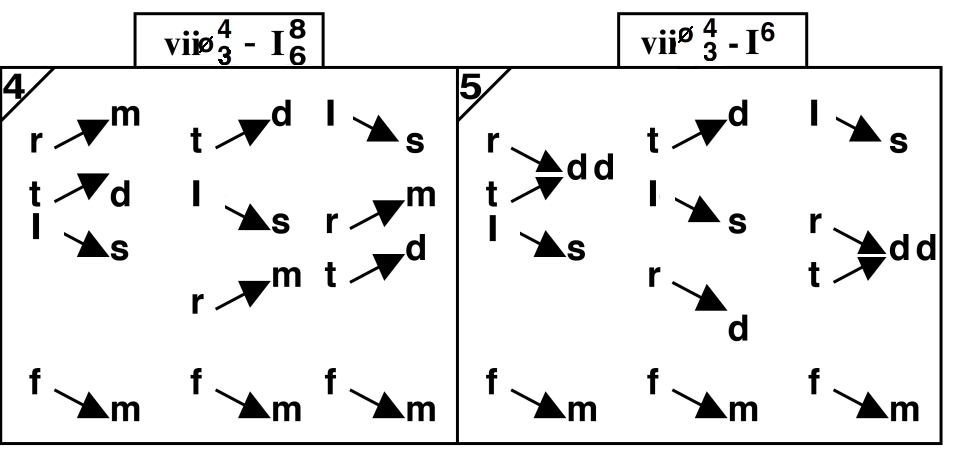14 Leading Tone Seventh Chord
The diminished seventh in minor keys (viio7)
The half diminished seventh in major keys (viiø7)
The leading tone seventh chord is part of the dominant chord family and normally resolves to the tonic.
Note the functional similarities of the dominant chord family members:
|
r t s |
f r t s |
f r t |
l f r t
|
le f r t
|
| V | V7 | viio | viiø7 in major | viio7 in minor |
RESOLUTIONS
All the tendency tones resolve similarly as with the V or V7 chord moving to the tonic:
- The leading tone (ti) resolves up by step to do
- The dissonant fifth (fa) resolves down by step to m(e)
- The dissonant seventh (la/le) resolves down by step to so
- The third of the chord (re) is not a tendency tone and can move up or down to either m(e) or do
Voice Leading
A. leading tone seventh chord moving to the tonic
ROOT POSITION
viio7 and viiø7 resolve to a root position tonic chord.
Minor
Major
Voice leading considerations in major
- In major keys, the viiø7 chord requires special attention because the resulting la – re, so – do movement produces parallel P5ths.
- To avoid the parallel P5ths, re moves up to double mi.
- Another solution is to move la – so first to create a dominant seventh chord inversion, and then resolve to I. The viio7 and viiø7 chords are often attached to the V7 this way to prolong and embellish the dominant. Only one voice moves (la/le – so) and the two chords form a dominant group (see Section B).
FIRST INVERSION
viio![]() and viiø
and viiø![]() resolve to either a root position or first inversion tonic chord.
resolve to either a root position or first inversion tonic chord.
Minor
Major
SECOND INVERSION
viio![]() and viiø
and viiø![]() resolve to a first inversion tonic chord.
resolve to a first inversion tonic chord.
Minor
Major
THIRD INVERSION
viio2 and viiø2 typically resolve to V7 before moving to the tonic. (See Section B.)
B. leading tone seventh chord to V7 before moving to the tonic
Resolutions of the viio7 and viiø7 chords to V7, creating a dominant group.
ROOT POSITION
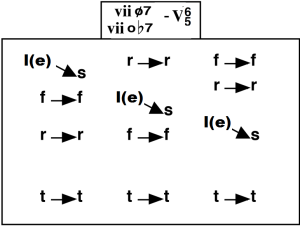
FIRST INVERSION
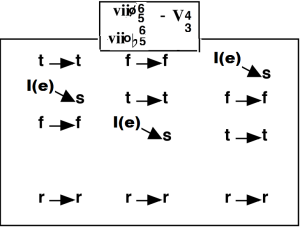
SECOND INVERSION
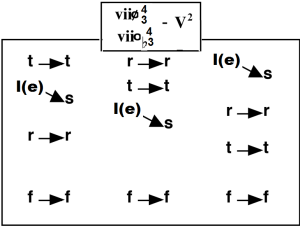
THIRD INVERSION
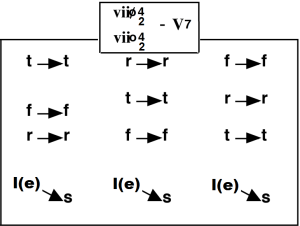
Seventh chords: figured bass in minor

Practice 1
Name and spell any leading tone seventh chord in root position and any inversion, in all major and harmonic minor keys.
Example 1: What is the viiø7 chord in B major?
major?
Answer: The 7th note of B major is A. The viiø7 chord in major keys is a half diminished seventh chord. Therefore, the viiø7 chord in B
major is A. The viiø7 chord in major keys is a half diminished seventh chord. Therefore, the viiø7 chord in B major (Bb: viiø7) is Am7(
major (Bb: viiø7) is Am7( 5).
5).
Example 2: What is the viio chord in E minor?
chord in E minor?
Answer: The 7th note of E minor is D . The viio
. The viio chord in minor keys is a fully diminished seventh chord. Therefore, the viio
chord in minor keys is a fully diminished seventh chord. Therefore, the viio chord in E minor (Em: viio
chord in E minor (Em: viio ) is D
) is D o7/F
o7/F .
.
Practice 2
